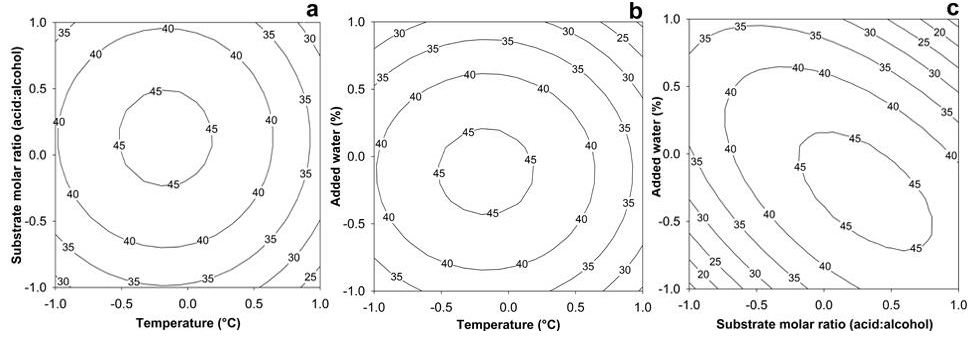 |
|
In this work, it was developed novel bioreactor consisting of Aspergillus niger lipase (ANL) entrapped in a polyacrylamide-based supermacroporous monolithic cryogel. Bioreactor performance in catalyzing the flavor ester butyl butyrate was optimized as a function of temperature (°C), substrate molar ratio (butyric acid: n-butanol) and added water (% (v/v)). The bioreactor was also applied to interesterification reactions. The maximum esterification yield (46%) for butyl butyrate synthesis was found at 40 °C, with a butyric acid:n-butanol molar ratio of 1:1.43 and added water of 65% (v/v). The bioreactor proved to be reusable with four consecutive reuses in the esterification reaction, with a residual esterification yield of 64.6% and volumetric activity of 31.6 mmol/mL·h. A high interesterification yield (17.35% in 24 h) was achieved when the substrate concentrations of tripalmitin and triolein were both 15 mmol/L, 35% added water (v/v) and temperature of 40 °C. These results showed that the bioreactor is a promising biocatalyst for biotechnological applications.
Keywords: cryogel, lipase, entrapment, butyl butyrate, tripalmitin.
|
|
 |

